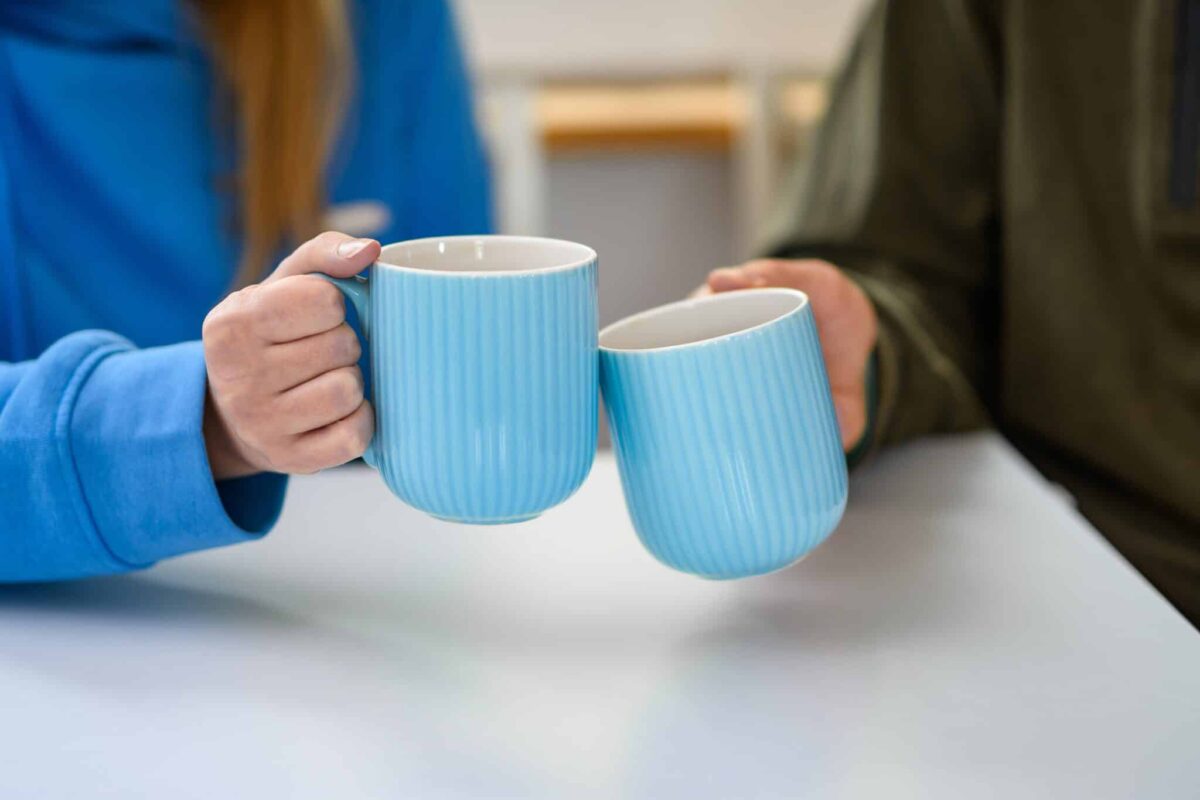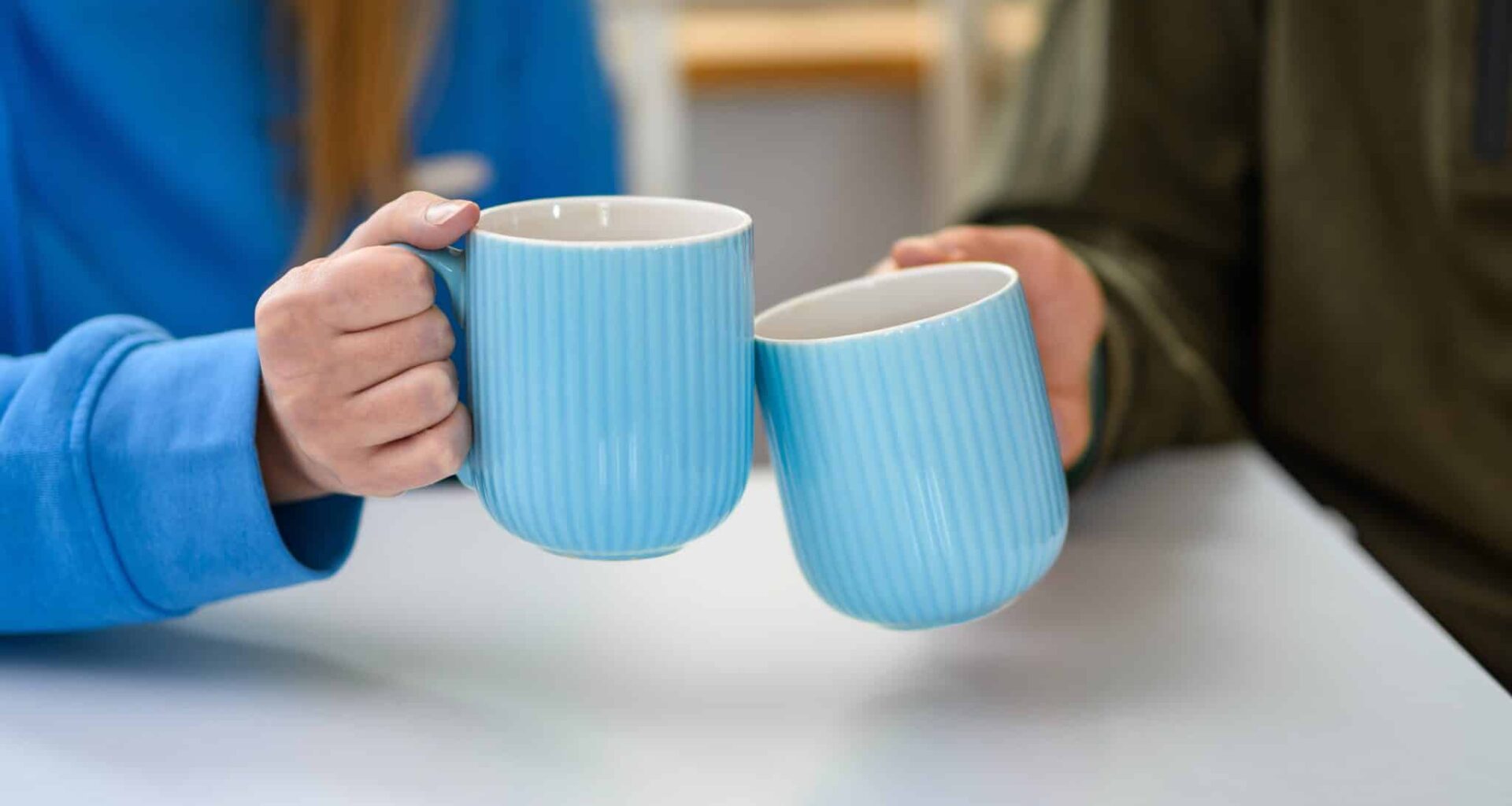
Drinking cocoa before prolonged sitting can promote healthy blood vessel function. (Credit: PawelKacperek on Shutterstock)
In A Nutshell
High cardiovascular fitness offers no protection against blood vessel damage from two hours of sitting, challenging common assumptions about exercise benefits.
Drinking cocoa rich in flavanols before sitting preserved blood vessel function in both arms and legs, regardless of fitness level.
Sitting increased diastolic blood pressure by up to 5.8 mm Hg in all participants; flavanols could not prevent these increases.
Strategic consumption of flavanol-rich foods like cocoa, dark chocolate, green tea, or berries before unavoidable sitting periods may help protect your blood vessels.
If you’re logging serious gym time, you might assume those morning runs or spin classes protect you from the damage of sitting all day at work. New research says: not so fast.
Scientists found that young men with excellent cardiovascular fitness experienced the same blood vessel problems after two hours of sitting as their less-fit peers. The silver lining? Both groups maintained healthy blood vessel function when they drank a cocoa beverage rich in flavanols (beneficial plant compounds found in cocoa, tea, and berries) before settling into their chairs.
The study, published in The Journal of Physiology, comes at a time when young adults now spend roughly six hours daily seated. That’s an 18% jump over two decades. All this sitting raises the risk of heart disease and high blood pressure, even among people who exercise regularly.
The researchers note that sitting temporarily harms blood vessel function and blood pressure. They wondered whether strategic food choices during sitting might help counter these effects.
When Fitness Doesn’t Matter
Forty young men participated in the study. Half had peak oxygen consumption levels of at least 56 ml/kg/min (think: people who run or cycle regularly and are in excellent shape). The other half scored under 41 ml/kg/min (more typical fitness levels). Each man completed two sessions at least a week apart. Before each session, they drank either a high-flavanol cocoa beverage containing 695 mg of total flavanols or a nearly identical low-flavanol version with just 5.6 mg. Neither the participants nor the researchers knew which drink was which until all the data had been analyzed.
Researchers measured how well blood vessels perform using a technique called flow-mediated dilation. This test checks how arteries expand when blood flow increases. They examined two arteries: the brachial artery in the upper arm and the superficial femoral artery in the thigh.
After two hours of uninterrupted sitting, blood vessel function declined in both arteries, regardless of fitness level. Among those who drank the low-flavanol beverage, brachial artery function dropped by 0.6% in high-fit men and 0.7% in low-fit men from their starting measurements. The femoral artery took an even bigger hit, declining about 1% in both groups.
These percentages matter more than they might seem. Studies show that a 1% improvement in this blood vessel test translates to at least a 9% reduction in future heart disease risk. Flip that around, and the sitting-induced decreases could meaningfully raise risk over time.
 Even robust cardiovascular fitness failed to protect against the health pitfalls of sitting. (Foto de Alexander Redl en Unsplash)
Even robust cardiovascular fitness failed to protect against the health pitfalls of sitting. (Foto de Alexander Redl en Unsplash)
Here’s the kicker: high cardiovascular fitness offered zero protection. The high-fit participants entered the study with lower resting heart rates and blood pressure, clear signs of superior conditioning. Yet after two hours of sitting, their blood vessels responded just as poorly as their less-fit counterparts.
How Cocoa Changed Everything
The flavanol drink told a different story. Participants who consumed the high-flavanol cocoa before sitting maintained their starting blood vessel function in both arteries throughout the two-hour period. Instead of declining, their measurements stayed stable or even increased slightly.
Cocoa flavanols appear to work differently than physical activity. Previous research shows that walking breaks during sitting improve blood vessel function because movement pumps more blood through the arteries. Flavanols, however, preserved function without changing blood flow at all. These compounds likely work by boosting production of nitric oxide (a molecule that keeps blood vessels healthy) while reducing endothelin-1, a substance that makes blood vessels constrict.
The dose used in the study (150 mg of epicatechin, a specific type of flavanol) falls within what you could get from food. A cup of unprocessed cocoa powder or certain dark chocolates can provide similar amounts. So can several servings of green tea, berries, or apples throughout the day. The researchers used commercially available cocoa powders for the study.
The Blood Pressure Problem
Blood pressure painted a more concerning picture. Sitting pushed up diastolic blood pressure (the bottom number in a blood pressure reading) by anywhere from 2.4 to 5.8 mm Hg across all participants. These increases happened regardless of flavanol intake or fitness level.
For young adults under 50, that diastolic number predicts death risk better than the top number. The increases pushed some participants into ranges that doctors consider pre-hypertensive.
Flavanols couldn’t prevent these blood pressure spikes, showing their benefits work on some aspects of blood vessel health but not others. The researchers suggest that weeks rather than hours of supplementation might be needed to build protection against blood pressure increases during sitting.
In the tiny blood vessels that deliver oxygen directly to muscle tissue, sitting caused measurable changes that flavanols also couldn’t prevent. Muscle oxygen levels in the calf declined during sitting. The tissue’s ability to quickly restore oxygen after temporary blood flow restriction became impaired. Interestingly, high-fit individuals showed consistently lower tissue oxygen levels at rest, likely because their bodies are better at extracting oxygen from blood.
Making It Work in Real Life
A few caveats: All participants were young men aged 18 to 45, so results might not apply to women, older adults, or people with existing heart disease. The sitting lasted two hours, which is shorter than many real-world situations. Office workers, long-distance drivers, and frequent flyers often sit considerably longer, potentially experiencing worse effects.
The cocoa powders were carefully matched for everything except flavanol content, including caffeine. This matching ensured the observed benefits came specifically from flavanols. But there’s a catch: most people consume high-flavanol cocoa with added sugar and fat, which could cancel out the heart benefits.
Eating and sitting happen together constantly in modern life. You might not be able to take a walking break during a long flight or hours-long meeting, but you could eat flavanol-rich foods beforehand. In this study, people drank the cocoa immediately before sitting began, yet the protection lasted the full two hours.
The finding that fitness doesn’t protect against acute sitting damage matters for how we think about health. Exercise remains absolutely critical for overall heart health and longevity. But the data show that even dedicated athletes can’t exercise their way out of sitting’s immediate effects on blood vessels. Marathon runners who spend workdays sitting still face blood vessel problems from those hours, regardless of their evening training runs.
For the half of young adults sitting at least six hours daily, combining movement breaks with strategic flavanol consumption might offer more protection than either approach alone. Dark chocolate before a long car trip, green tea during desk work, or berries before binge-watching your favorite show could provide meaningful support for your blood vessels when getting up isn’t practical. The research adds a potential dietary tool to help address the vascular damage from sitting, complementing the well-established benefits of simply standing up and moving around.
Disclaimer: This article is for informational purposes only and is not intended as medical advice. Consult with your healthcare provider before making changes to your diet or exercise routine, especially if you have existing health conditions.
Paper Summary
Methodology
This randomized, double-blind, placebo-controlled crossover study recruited 40 young healthy males from the University of Birmingham and surrounding area. Participants were split into high-fit (peak oxygen consumption at least 49 ml/kg/min, n=20) or low-fit (41 ml/kg/min or below, n=20) based on maximal aerobic capacity testing on a cycle ergometer. Each participant completed two experimental visits separated by at least seven days. They consumed either a high-flavanol cocoa drink (695 mg total flavanols including 150 mg epicatechin) or a low-flavanol control drink (5.6 mg total flavanols) immediately before two hours of uninterrupted sitting. The primary outcome was superficial femoral artery flow-mediated dilation, with brachial artery flow-mediated dilation, blood pressure, shear rate, blood flow, and muscle oxygenation measured as secondary outcomes. All measurements were taken before and after the sitting period. Participants fasted for 12 hours and avoided polyphenol-rich foods, caffeine, alcohol, and exercise for 24 hours before each visit.
Results
Two hours of sitting reduced flow-mediated dilation in both the superficial femoral artery (by approximately 1.0 to 1.1%) and brachial artery (by 0.6 to 0.7%) in both fitness groups after consuming the low-flavanol drink. High-flavanol consumption prevented these declines, maintaining baseline blood vessel function in both arteries for both fitness groups. Sitting also decreased anterograde shear rate and blood flow in both arteries regardless of intervention or fitness level. Diastolic blood pressure increased by 2.4 to 5.8 mm Hg after sitting in all conditions, with no protective effect from flavanols or fitness. Muscle tissue oxygenation declined during sitting and reactive hyperemia responses were impaired after sitting, with no effects from flavanol consumption. Fitness level did not protect against any of the sitting-induced vascular impairments, and flavanols were equally effective in high-fit and low-fit individuals.
Limitations
The study included only young males aged 18 to 45, limiting generalizability to females, older adults, and those with cardiovascular disease. Female participants were excluded because hormonal fluctuations across the menstrual cycle could affect vascular responses to both sitting and flavanols, requiring dedicated research. Participants restricted polyphenol intake for only 24 hours before testing, though some metabolites can remain in circulation for up to 80 hours. The sitting duration was limited to two hours, shorter than many real-world sedentary bouts. Habitual diet was assessed using food frequency questionnaires rather than food diaries, which may be less precise. Some planned measurements were excluded from analysis due to poor image quality or signal artifacts (9 of 40 for superficial femoral artery flow-mediated dilation, 4 of 40 for near-infrared spectroscopy data).
Funding and Disclosures
The study received no external funding. AD’s PhD studentship was fully funded by the College of Life and Environmental Sciences at the University of Birmingham. Barry Callebaut AG (Zurich, Switzerland) provided the high and low-flavanol cocoa powders used in the study. The authors declared no competing interests. Cocoa powder analysis for flavanol content was performed using established high-performance liquid chromatography methods, with total polyphenol concentrations measured by Folin-Ciocalteu assay.
Publication Information
Daniele, A., Lucas, S. J. E., & Rendeiro, C. (2025). Dietary flavanols preserve upper- and lower-limb endothelial function during sitting in high- and low-fit young healthy males. The Journal of Physiology, 0.0, 1–27. doi:10.1113/JP289038. The paper was received on April 10, 2025, accepted after revision on September 23, 2025, and first published online on October 12, 2025. The study was approved by the University of Birmingham Science, Technology, Engineering and Mathematics ethics committee (ERN_19-0851) and conducted in accordance with the Declaration of Helsinki.

